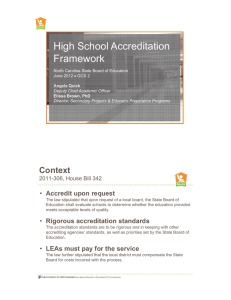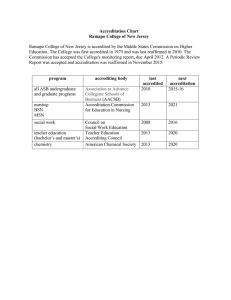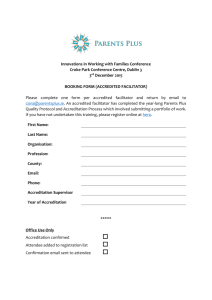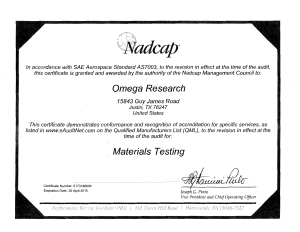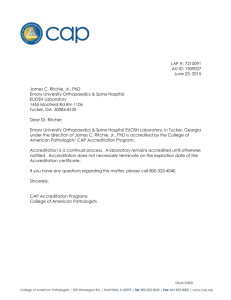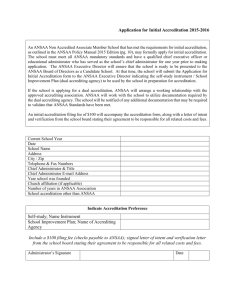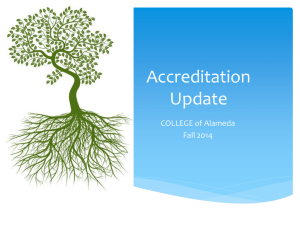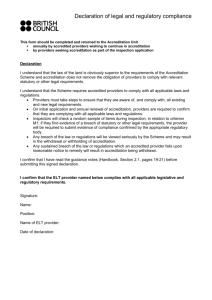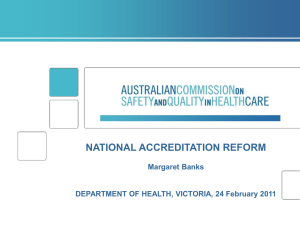High School Accreditation Framework
advertisement
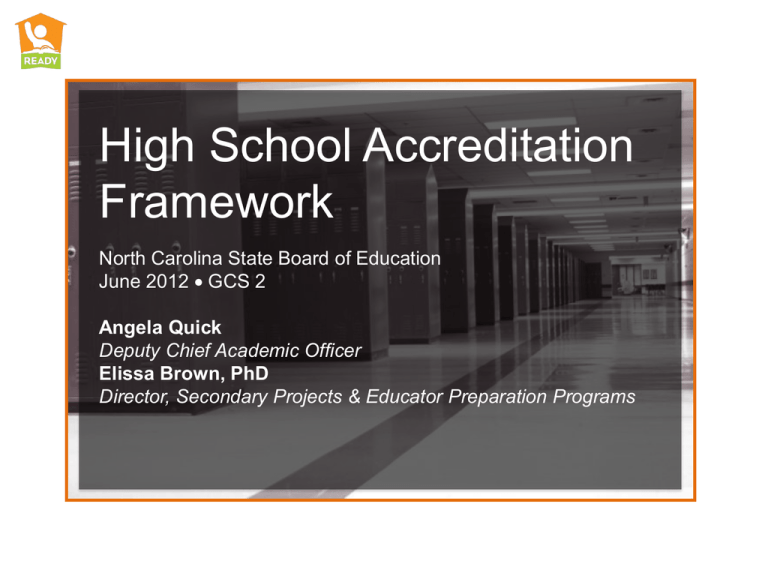
High School Accreditation Framework North Carolina State Board of Education June 2012 GCS 2 Angela Quick Deputy Chief Academic Officer Elissa Brown, PhD Director, Secondary Projects & Educator Preparation Programs Context 2011-306, House Bill 342 • Accredit upon request The law stipulated that upon request of a local board, the State Board of Education shall evaluate schools to determine whether the education provided meets acceptable levels of quality. • Rigorous accreditation standards The accreditation standards are to be rigorous and in keeping with other accrediting agencies’ standards, as well as priorities set by the State Board of Education. • LEAs must pay for the service The law further stipulated that the local district must compensate the State Board for costs incurred with the process. Purpose Today To outline our basic approach for accrediting high schools. Definition, Purpose & Process • Definition Schools and/or districts undergo a quality assurance process that includes self-reflection and outside peer review. • Purpose To drive continuous improvement of the teaching/learning process and the systems supporting that process through officially accrediting. • Process Typically relies on outsiders to: review multiple sources of data cite evidence of quality garner input from multiple stakeholders Process for Framework Development 1. Review literature on High School Accreditation 2. Sub-contract with consultant to provide framework report 3. Vet framework with ASIS directors and departments 4. Vet framework with LEA constituencies 5. Draft report to SBE 6. Revise based on input and HS accountability model 7. Submit to General Assembly Accreditation Designations Fully Accredited Provisionally Accredited Not Accredited Basics of Accreditation Approach • First, we will look at READY accountability indicators to determine if the school met established standards (standards TBD) and review a school self-study If READY accountability indicators do not meet established standards, then • Additional system indicators are reviewed o o Comprehensive document review e.g. school improvement plan, NCGP, etc. Site Visits e.g. observations, focus groups and interviews DRAFT Implications • Cost for LEAs • Staff capacity & travel • State accreditation vs. national accrediting body • Alignment with other key state initiatives
